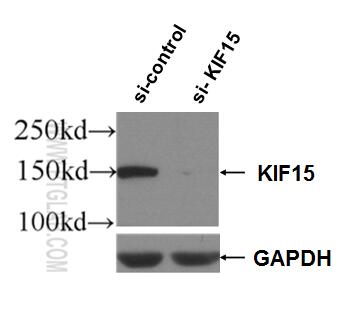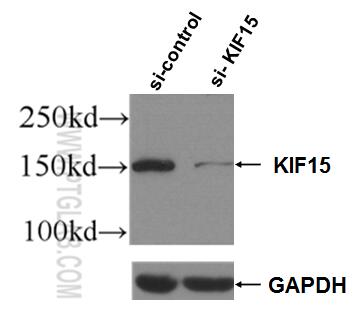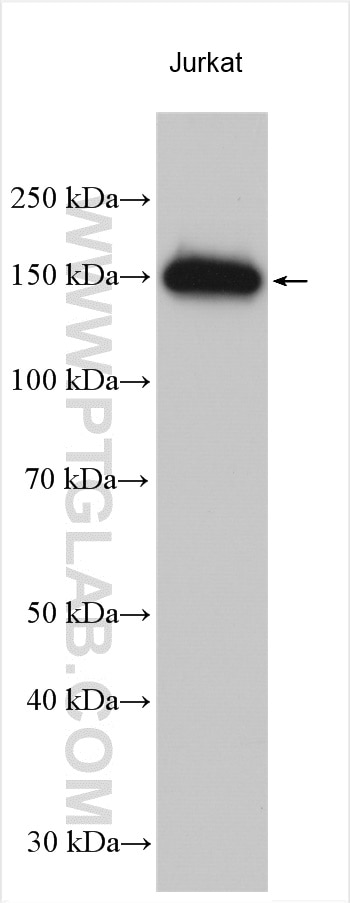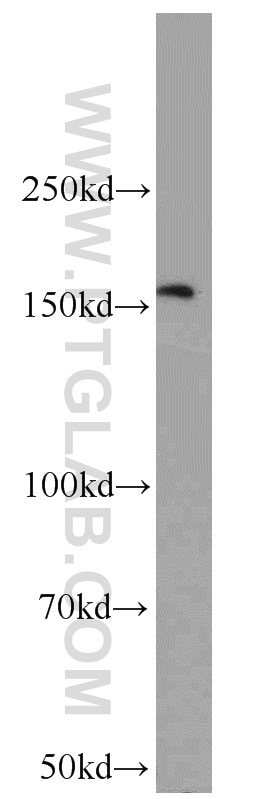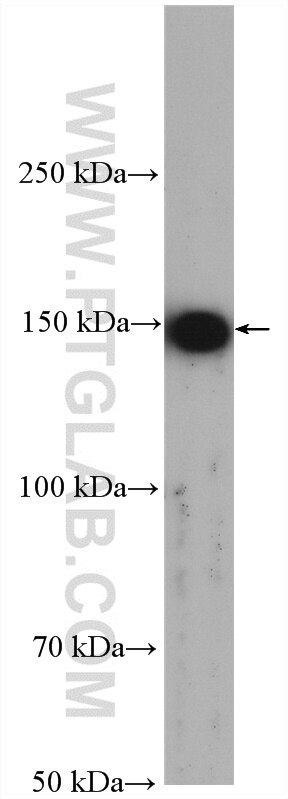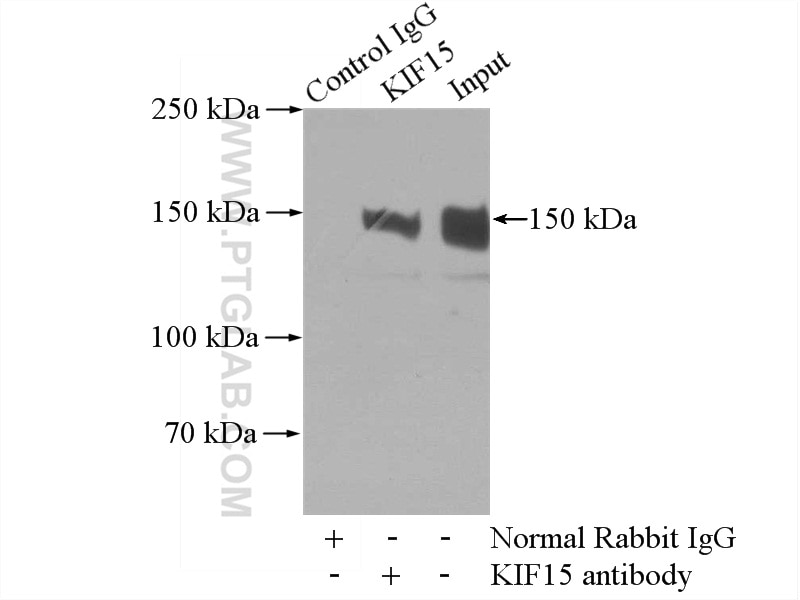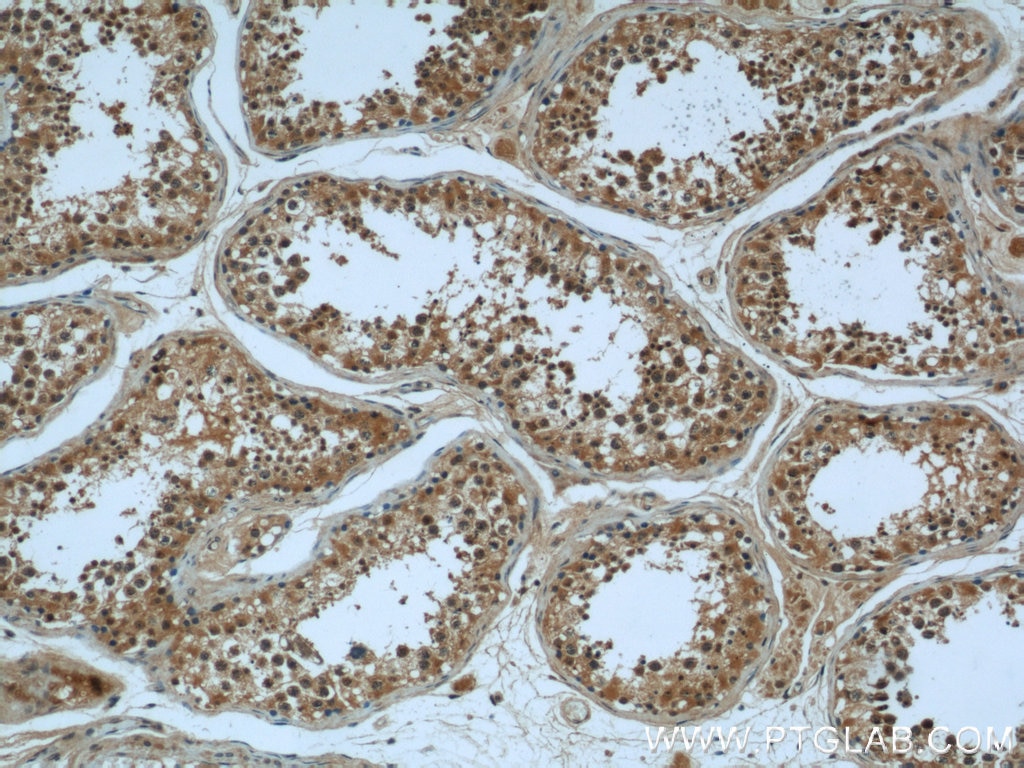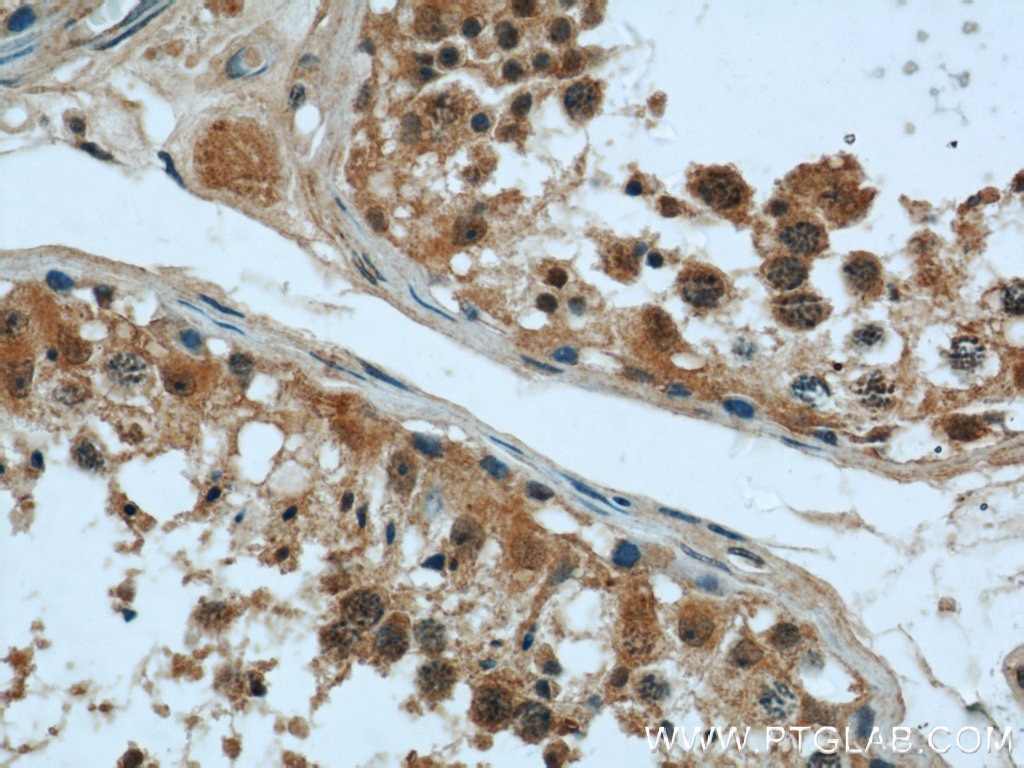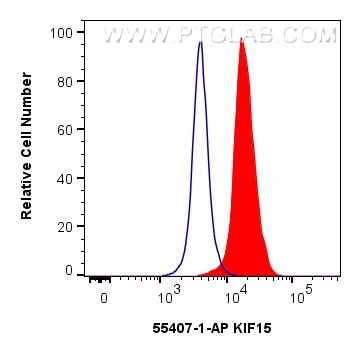- Phare
- Validé par KD/KO
Anticorps Polyclonal de lapin anti-KIF15
KIF15 Polyclonal Antibody for WB, IHC, FC (Intra), IP, ELISA
Hôte / Isotype
Lapin / IgG
Réactivité testée
Humain, souris et plus (2)
Applications
WB, IHC, IF, FC (Intra), IP, ELISA
Conjugaison
Non conjugué
N° de cat : 55407-1-AP
Synonymes
Galerie de données de validation
Applications testées
| Résultats positifs en WB | cellules Jurkat, cellules HEK-293, cellules MDA-MB-453s, tissu de thymus de souris |
| Résultats positifs en IP | tissu de thymus de souris |
| Résultats positifs en IHC | tissu testiculaire humain il est suggéré de démasquer l'antigène avec un tampon de TE buffer pH 9.0; (*) À défaut, 'le démasquage de l'antigène peut être 'effectué avec un tampon citrate pH 6,0. |
| Résultats positifs en FC (Intra) | cellules HEK-293, |
Dilution recommandée
| Application | Dilution |
|---|---|
| Western Blot (WB) | WB : 1:2000-1:10000 |
| Immunoprécipitation (IP) | IP : 0.5-4.0 ug for 1.0-3.0 mg of total protein lysate |
| Immunohistochimie (IHC) | IHC : 1:20-1:200 |
| Flow Cytometry (FC) (INTRA) | FC (INTRA) : 0.40 ug per 10^6 cells in a 100 µl suspension |
| It is recommended that this reagent should be titrated in each testing system to obtain optimal results. | |
| Sample-dependent, check data in validation data gallery | |
Applications publiées
| KD/KO | See 10 publications below |
| WB | See 28 publications below |
| IHC | See 14 publications below |
| IF | See 8 publications below |
Informations sur le produit
55407-1-AP cible KIF15 dans les applications de WB, IHC, IF, FC (Intra), IP, ELISA et montre une réactivité avec des échantillons Humain, souris
| Réactivité | Humain, souris |
| Réactivité citée | rat, Humain, poisson-zèbre, souris |
| Hôte / Isotype | Lapin / IgG |
| Clonalité | Polyclonal |
| Type | Anticorps |
| Immunogène | Peptide |
| Nom complet | kinesin family member 15 |
| Masse moléculaire calculée | 160 kDa |
| Poids moléculaire observé | 150-165 kDa |
| Numéro d’acquisition GenBank | NM_020242 |
| Symbole du gène | KIF15 |
| Identification du gène (NCBI) | 56992 |
| Conjugaison | Non conjugué |
| Forme | Liquide |
| Méthode de purification | Purification par affinité contre l'antigène |
| Tampon de stockage | PBS with 0.02% sodium azide and 50% glycerol |
| Conditions de stockage | Stocker à -20°C. Stable pendant un an après l'expédition. L'aliquotage n'est pas nécessaire pour le stockage à -20oC Les 20ul contiennent 0,1% de BSA. |
Informations générales
KIF15, also named as KLP2 and KNSL7, belongs to the kinesin-like protein family and KLP2 subfamily. It is a plus-end directed kinesin-like motor enzyme which involved in mitotic spindle assembly. Several isoforms of KIF15 exist due to the alternative splicing, with molecular weight between 130-160 kDa. Sometimes higher molecular weight around 200 kDa can also be observed, which may be a modified variant of KIF15. (14618103)
Protocole
| Product Specific Protocols | |
|---|---|
| WB protocol for KIF15 antibody 55407-1-AP | Download protocol |
| IHC protocol for KIF15 antibody 55407-1-AP | Download protocol |
| IP protocol for KIF15 antibody 55407-1-AP | Download protocol |
| FC protocol for KIF15 antibody 55407-1-AP | Download protocol |
| Standard Protocols | |
|---|---|
| Click here to view our Standard Protocols |
Publications
| Species | Application | Title |
|---|---|---|
Am J Respir Crit Care Med Rare and Common Variants in KIF15 Contribute to Genetic Risk of Idiopathic Pulmonary Fibrosis | ||
Cancer Res KIF15-mediated stabilization of AR and AR-V7 contributes to enzalutamide resistance in prostate cancer.
| ||
Cancer Cell Int Polyamine metabolism patterns characterized tumor microenvironment, prognosis, and response to immunotherapy in colorectal cancer | ||
Cell Physiol Biochem Increased KIF15 Expression Predicts a Poor Prognosis in Patients with Lung Adenocarcinoma.
| ||
Front Cell Dev Biol Transcriptional, Post-Transcriptional, and Post-Translational Mechanisms Rewrite the Tubulin Code During Cardiac Hypertrophy and Failure. | ||
Transl Oncol METTL3 methylated KIF15 promotes nasopharyngeal carcinoma progression and radiation resistance by blocking ATG7-mediated autophagy through the activation of STAT3 pathway |
